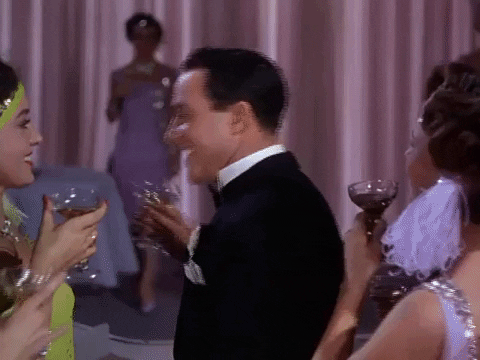The Roller Skate Debate or A Brief Overview of Skate Dances in Classic Film.
Warning, this post is going to be silly.
There seems to be some confusion on the topic of roller-skating in film. While this is by no means a scholarly look, I thought it might be fun to do a brief overview of roller skate dances in classic film.
The common misconception is that the first filmed tap-dance on roller skates came in 1955 with Gene Kelly's film, "It's Always Fair Weather."
This is not the case.
Based on a quick stint of film-research on the topic, I think that the first scene in a film that could possibly constitute someone "dancing on roller skates" came in 1916 with Charlie Chaplin's film, "The Rink."
The skating stuff comes right around 10:45. I have not watched enough copies of this film to know which has the best restoration, but this one seems passable, if without a score.
What he does here is an absolutely incredible combination of skating, dance, physical comedy, and fight choreography. There are very few cuts in the scene (it is hard to tell exactly how many with the skips in the old film) which means that Chaplin and the rest of the cast had to do large chunks of the scene at a time without tripping or messing up any of the choreography.
This is not to be confused with Chaplin's skating scene in "Modern Times" 1936, although it could also be considered a dance!
Supposedly they achieved the effect of the ledge using a trick shot and some painted glass.
Next up we have my favorite duo, Fred Astaire and Ginger Rogers.
This scene comes from the 1937 film "Shall We Dance." It is where the famous "Let's Call the Whole Thing Off" song comes from. Supposedly, Gershwin heard Fred and Ginger talking and was inspired to write the song based on how their pronunciation differed on the word either.
This dance is incredible for a lot of reasons, not least of which being how few cuts there are in the sequence. Once they finish singing and start dancing (around 3:13) there is only one cut in the song. This means that almost the entirety of the dance had to be filmed in one take, any mess up and you start from the top. Additionally, it means that they didn't freeze their wheels to make the more traditional "tap" style sequences easier on themselves. The wheels are free and moving for the entire dance.
Next up we have Donald O'Connor's skate dance in the somewhat ill-fated 1953 film "I Love Melvin." The film was billed as a reunion of the "Singing in the Rain" dream-team of Donald O'Connor and Debbie Reynolds. It was a flop but has some really killer dance numbers.
O'Connor's dance is the first on our list to use the technique of freezing wheels. From 2:24 onward, when the dance properly starts there are around 5 cuts. 2 of these are to accommodate for wheel freezing and unfreezing, 1 for shot set-up/stunts, and the other 2 for the falling stunt that he pulls at the end.
During the first bit of the dance, the wheels are clearly moving and he is truly skating and dancing at the same time. He pulls some of his acrobatic chops during this segment, which is wonderful.
There is a camera cut and he begins dancing in a more traditional tap style. The wheels on the skates are clearly not moving while he does this (it is still a good bit, no judgment.) The next cut leads back into a section where his wheels are again not frozen.
Last but not least we have the fabulous Gene Kelly in 1955's "It's Always Fair Weather."
In true, epic Gene Kelly style, he takes the concept to a larger scale than any of our other dances. All of our previous dances are confined to limited space. Gene Kelly is certainly not.
There are around 11 cuts in this dance, which is a lot. However, most of them are due to him singing and dancing at the same time. He has to take a couple pauses in the dance to make sure that the narrative and lyrics don't get lost. The others are due mostly to camera angle switches or just how much ground he is covering; keeping it all on one take would be a lot of camera acrobatics.
His wheels are clearly never frozen. He incorporates traditional tap maneuvers with his motion-heavy, ballet influenced skating sequence so switching between frozen and unfrozen wheels would add a lot of cuts into the scene that (thankfully) aren't there. In addition, you can hear his wheels rattling!
All in all, this dance is spectacular.
P.S. he also skates in the 1980 Olivia Newton-John film "Xanadu" but... let's not go there.
There are many additional examples in more recent films and they will hopefully get their own post soon.



Comments
Post a Comment